Fire Doors
SCI Construction are FireQual Certified in the Inspection, Maintenance and Installation of Fire Doors. FireQual is the independent specialist awarding body for individuals working within the fire safety industry. Working with key stakeholders, FireQual develop nationally – and internationally respected qualifications based on the needs of the fire safety industry and wider society. Achieving a FireQual qualification demonstrates an individual’s suitable knowledge to work appropriately within the fire safety arena. They offer peace of mind to employers and clients, meaning they can be confident in the understanding and skills of individuals who work for them.
Your Legal Duty as a Property Owner
Fire safety regulations in England and Wales are predominantly governed by the Regulatory Reform (Fire Safety) Order 2005.
The Regulatory Reform (Fire Safety) Order mandates the designation of a 'Responsible Person,' often the entity or individual controlling the building. This individual or organisation has a legally defined role that includes conducting a thorough fire risk assessment and developing an ongoing fire management strategy. This is non-negotiable and extends to common areas in flats, apartments, and houses of multiple occupations.
The Regulatory Reform (Fire Safety) Order offers the following hierarchy in working out who is the responsible person for a premises:
- If it’s a workplace, then the responsible person is the employer
- If it’s not a workplace, then it is the person with control over that premises or the owner
Non-compliance with the Regulatory Reform (Fire Safety) Order is a serious matter that can lead to hefty fines or even imprisonment. Given the life-and-death nature of fire safety, a complete understanding and diligent application of these regulations are imperative.
Click Here To Read A Story About Someone Who Was Prosecuted Under The Fire Safety Order.
The title "Responsible Person" (often abbreviated as 'RP') carries legal weight under fire safety regulations. This designation refers to the individual, multiple individuals, institution, or organisation with control over a property, and hence, the legal obligation to mitigate fire-related risks.
The primary duty of the Responsible Person is to conduct a comprehensive fire risk assessment for the building. This risk assessment isn't merely a cursory review but must include specific evaluations such as the ratings and strategic placements of fire doors. This information is essential for crafting a robust fire management plan that addresses the unique needs and vulnerabilities of the property.
The Responsible Person has the ultimate accountability for ensuring the fire safety measures are not only implemented but also maintained to the highest standard. Failure to meet these obligations can result in severe penalties, further underscoring the vital importance of this role within the context of building safety.
Key Provisions of the Regulatory Reform (Fire Safety) Order 2005
The Regulatory Reform (Fire Safety) Order is a comprehensive legal framework that sets out key responsibilities for ensuring fire safety within buildings. Among its various clauses, two articles stand out as especially significant:
- Article 17: This clause obliges the Responsible Person to establish and maintain 'a suitable maintenance regime.' It is essential to understand that this isn't just a cursory requirement. The focus here is on ensuring that all relevant fire safety equipment, including fire doors, are continually kept in an efficient state, ready to perform their vital role at a moment's notice.
- Article 18: This article is dedicated to the appointment of one or more 'competent persons' to oversee and execute preventative and protective measures. What qualifies someone as 'competent' in this context is not left to chance. The individual must possess sufficient training and experience to reliably assist the Responsible Person in upholding fire safety standards.
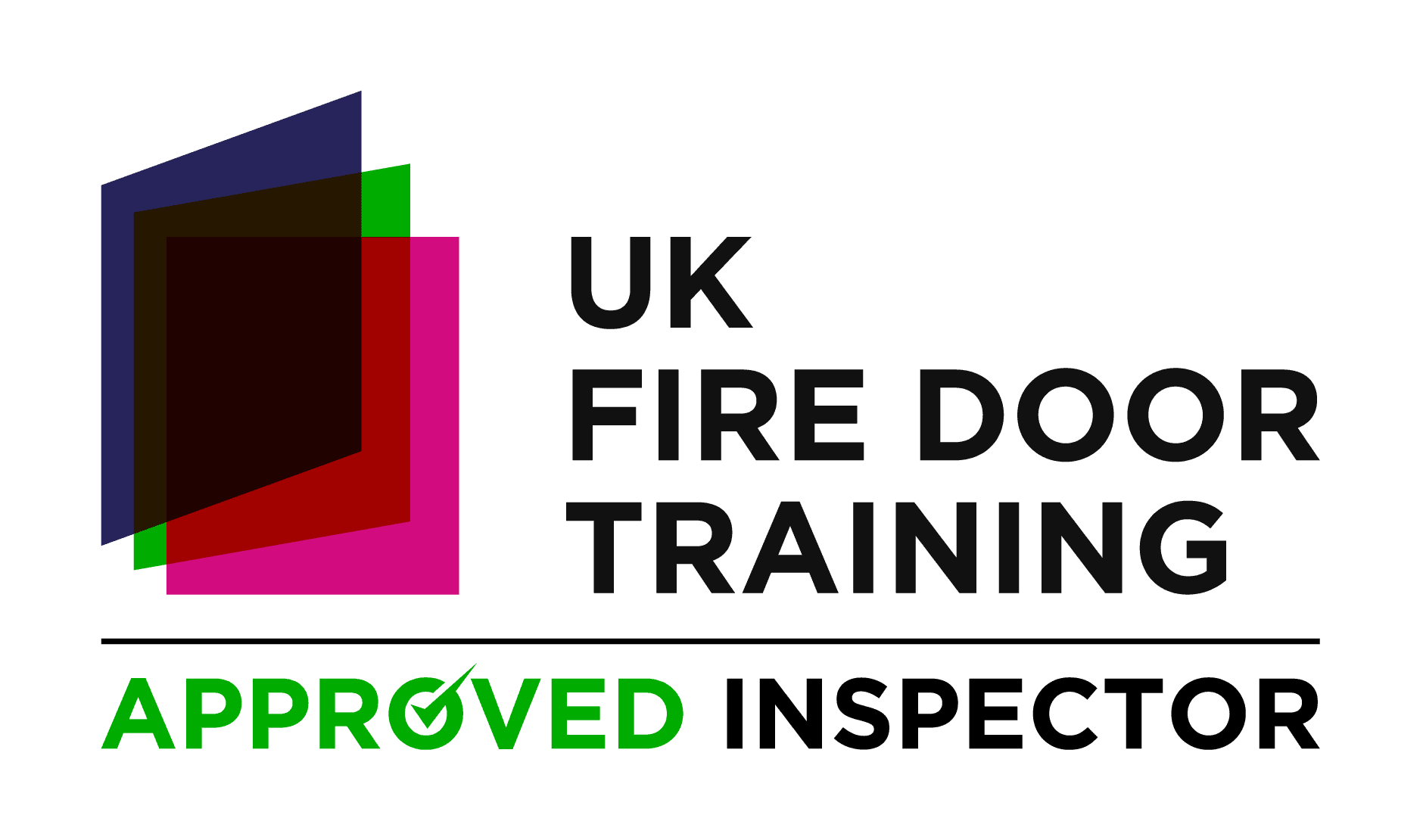
Our role when inspecting your fire doors will be to:
- Inspect: Assess fire doors against current UK and European Standards.
- Record: Document our findings meticulously using our 22 Point Check Inspection Report Form.
- Monitor: Keep an eye on the long-term performance of installed doors.
- Advise: Recommend actionable improvements or repairs.
SCI Construction carry out both non-invasive and invasive inspections based on your requirements. We can discuss with you and prepare a bespoke fire door inspection proposal prior to our inspection. We also provide ongoing inspections via a service contract if required.
Below is a video demonstration comparing the performance of two fire doors in a furnace test. One door is improperly installed and fitted with non-compliant components, while the other is correctly installed with compliant parts.
Fire Door - Essential Knowledge
In the UK, an estimated 3 million new fire doors are produced and fitted each year.
Despite this robust manufacturing and installation activity, a concerning percentage of these doors are not fitted to code. The consequences of such non-compliant installations are dire, risking both lives and property. An improperly installed door can fail within just a few minutes under fire conditions, rendering escape routes unusable and allowing flames and toxic smoke to spread uncontrollably.
Recent data suggests that nearly two-thirds of installed fire doors fail initial safety inspections, underscoring the urgent need for qualified installation and regular audits.
Fire doors vary in terms of their manufacturing styles and internal core materials. To be considered 'compliant,' each component—from the door frame to the seals and ironmongery—must meet the British Standards relevant to fire safety. On the other hand, 'non-compliant' components are those that do not meet these stringent standards, and their use compromises the integrity of the entire fire door assembly.
Prior to market release in the UK, fire doors undergo rigorous furnace testing to mimic the heat conditions they would encounter in an actual fire scenario. These tests are carried out to British Standards and/or European Standard
It's crucial to grasp from the outset that even a minor mistake in the installation process can result in severe repercussions. Incorrectly installed fire doors jeopardise both lives and property by failing to function effectively in a fire scenario.
Fire doors aren't merely a structural component; they're engineered life-saving devices. Their correct installation isn't just a job—it's a life-critical responsibility.
The tragedy of the Grenfell Tower fire has catalysed sweeping changes in the fire safety sector. In its wake, the government commissioned the 'Independent Review of Building Regulations and Fire Safety: Final Report,' commonly known as the Hackitt Review.
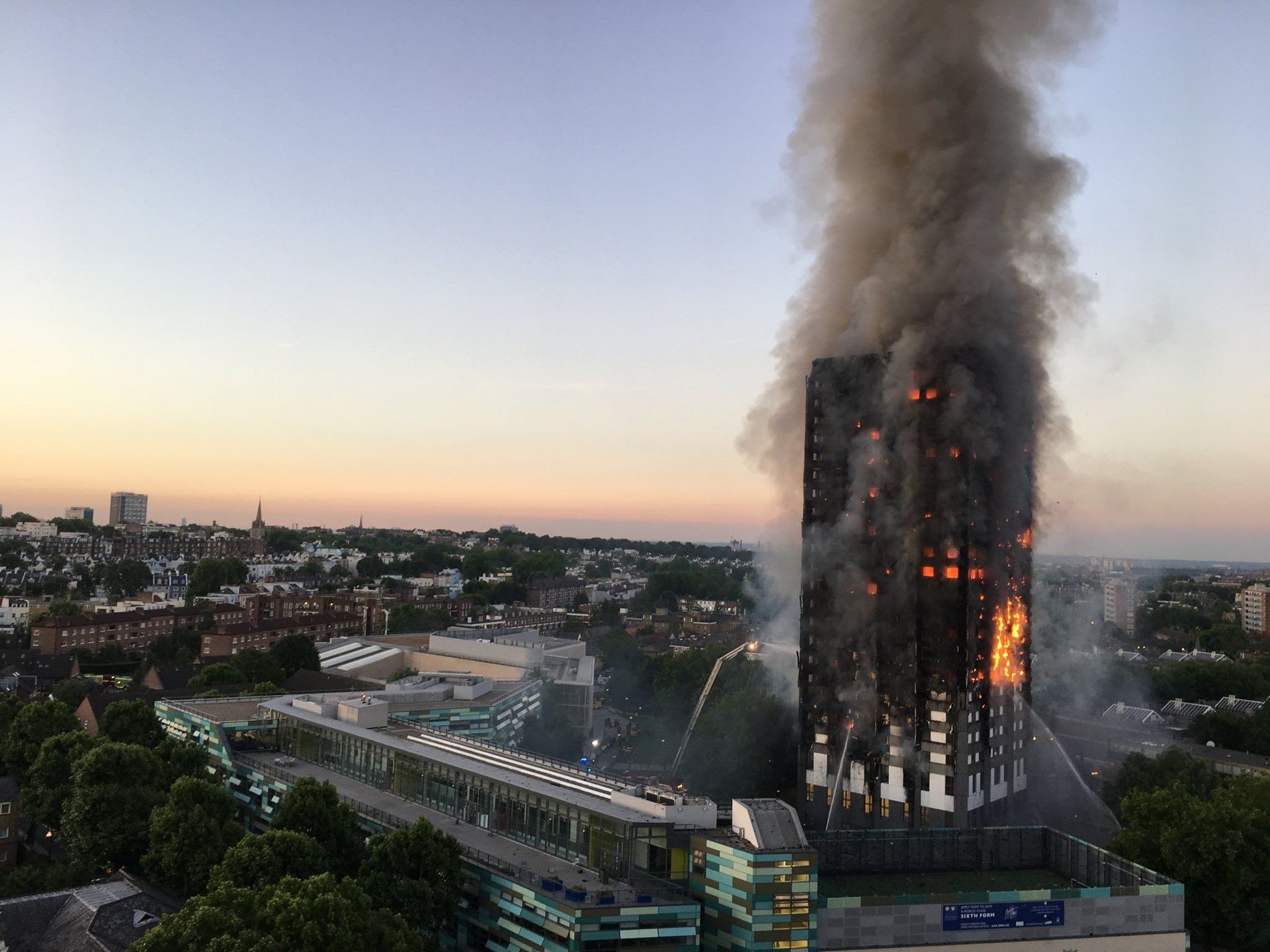
This seminal document has played an instrumental role in reshaping fire door safety standards, particularly for High Rise Residential Blocks (HRRBs). One of its significant impacts has been the heightened awareness around fire door safety. Housing associations and local authorities are now increasingly requiring certified proof of competency for fire door installers, maintainers, and inspectors.
It's essential to recognise that fire doors can be remarkably diverse in their construction and core materials. Appearances can be deceiving—two doors that look identical might have drastically different installation requirements. The components, including ironmongery, can also vary significantly between door types.
Fire doors are an integral part of a building's fire protection strategy, designed to close securely against their frame or rebate stop. They are an engineered safety device.
Each component, including the door leaf, frame, seals, and ironmongery, must meet stringent standards to perform effectively under fire conditions.
Fire doors restrict the spread of fire and smoke, providing extra minutes for safe evacuation. Also fire doors allow those who are unable to escape the building a chance to seek refuge.
Fire doors also limit structural damage, aiding firefighting efforts by containing the fire within specific compartments. Also fire doors restrict oxygen feeding the fire.
Under UK regulations, it's a legal requirement to install and maintain compliant fire doors. Failure to comply can result in severe penalties.
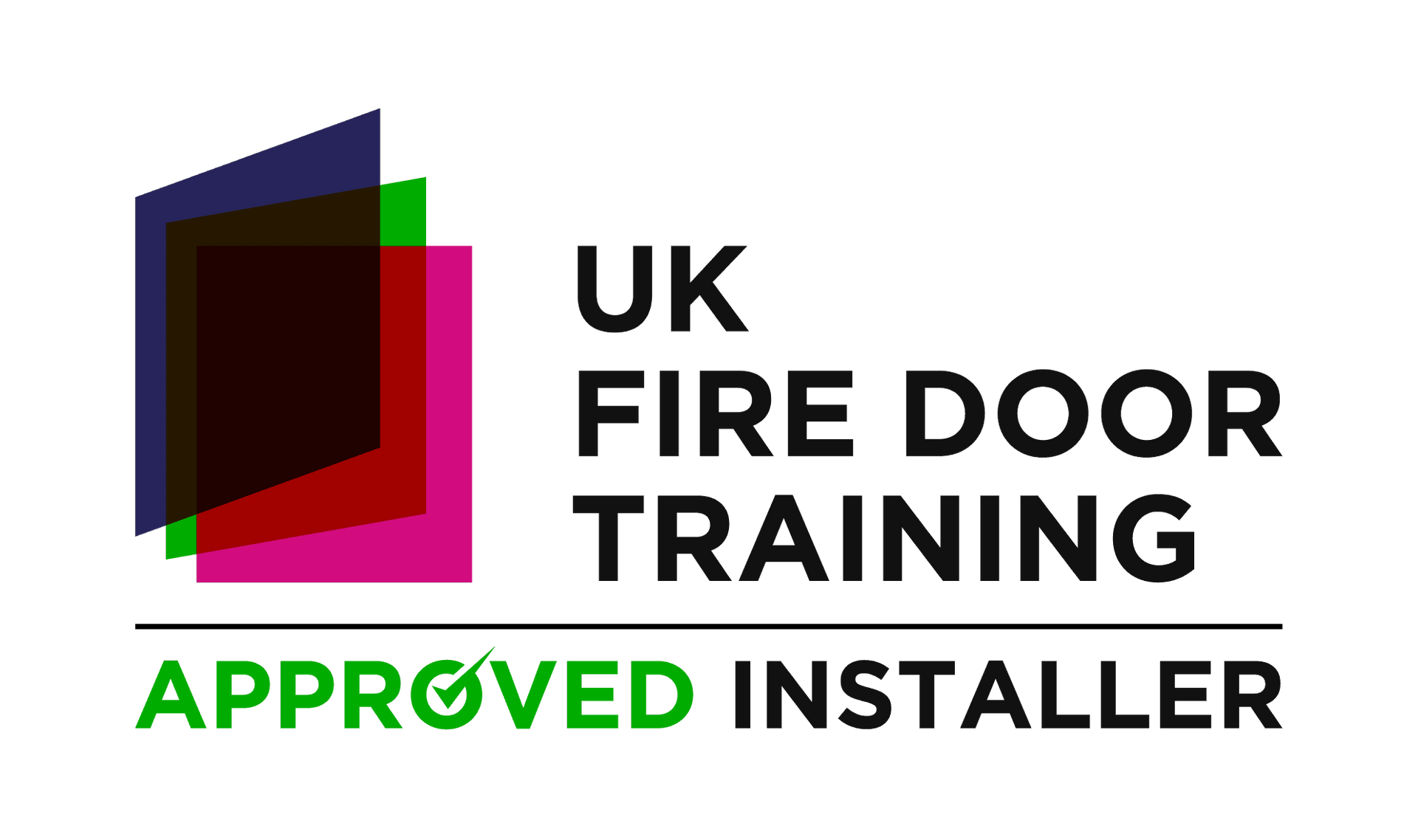
A key recommendation of the Hackitt Report was the emphasis on competency among professionals handling fire safety measures. For fire door inspectors, installers, and maintainers, this means possessing the necessary skills, knowledge, and experience to ensure that fire doors are fit for purpose and meet the required safety standards.
It's crucial to grasp from the outset that even a minor mistake in the installation process can result in severe repercussions. Incorrectly installed fire doors jeopardise both lives and property by failing to function effectively in a fire scenario.
Fire doors aren't merely a structural component; they're engineered life-saving devices. Their correct installation isn't just a job—it's a life-critical responsibility.
As certified installers we will provide the following as a minimum
- Hand over all relevant certification and data sheets for the fire door. This includes documentation for the door leaf, as well as all components such as ironmongery and the frame as duty bounder Under the Building Regulations for England and Wales, Regulation 38.
- Provide each client with a record of installation forms. These documents serve as a comprehensive log of the installation process, detailing the components and procedures involved.
- Site Clean up: After the installation is completed, it is essential to conduct a thorough site cleanup. This not only ensures a professional finish to the job but also adheres to safety standards by removing potential hazards.
Fire Door Certification & its Importance
Fire door certification is an indispensable measure of safety assurance. In the United Kingdom, a certificated fire door undergoes a meticulous examination process to confirm its compliance with either the British Standard BS 476 Part 22 or the European Standard EN 1634-1. These standards serve as a rigorous yardstick, ensuring each door can withstand the intense conditions of a fire.
Why Certification Matters
- Validation by Accredited Facilities: The integrity of these tests is upheld by being conducted at UKAS accredited test centres, eliminating room for error or compromised results.
- Quantifiable Protection: Certified fire doors are rated for their duration of fire resistance, often quantified in intervals of 30, 60, 90, or 120 minutes. This offers precise information to guide decisions on where and how the door should be utilised. We have impiracle evidence of the performance of the door.
- Comprehensive Safety : Certification assesses not only the door leaf but extends to other integral parts such as the frame, seals, and hardware. Each element contributes to the door’s overall fire-resistance capability.
- Peace of Mind: Certified doors afford occupants and responsible persons an added layer of confidence, knowing that the installation has met the stringent criteria laid out by safety regulations.
Product Traceability: Ensuring Reliability Through the Supply Chain
- Source Verification: The origins of each component used in a certified fire door can be verified. This ensures that all parts, from the door leaf to seals and hardware, come from approved and reputable manufacturers.
- Serial Numbers and Labels: Certified fire doors and their components typically come with unique serial numbers and certification labels. These serve as an identification tool, enabling tracking and validation of each door's manufacturing history and test performance.
- Documentation and Records: Keeping precise records of product purchases and installations aids in traceability. These records should include the certificate numbers, installation dates, and names of installers for each fire door and should be readily accessible for inspections.
- Ongoing Compliance: Traceability ensures that any recalls or updates to safety standards can be promptly addressed. Knowing exactly which doors are installed where allows for swift action in upgrading or replacing components as necessary.
- Accountability: In case of an unfortunate incident, traceability helps establish accountability. It allows for an audit trail, facilitating investigations into whether the fire doors met the required safety standards at the time of the event. Traceability doesn't merely facilitate compliance; it reinforces the integrity of the entire fire safety system. Its significance in certifiable quality assurance and risk management is invaluable.
Third-Party Certification Schemes
In the UK, there are multiple third-party certification bodies, such as:
- Certifire
- BM Trada Q-Mark
- LPCB
- Bluesky
- IFC
These certifications mean the product has undergone testing according to British Standard BS 476-22 or European Standard EN 1634-1. Such testing must be carried out in a UKAS accredited facility.
Manufacturers are subject to audits to ensure they have proper Factory Production Control (FPC) systems. This ensures products meet consistent specifications.
Doors manufactured under these schemes will feature a label or plug linked to a certificate of approval. This certificate outlines all the compatible components and configurations for that door.
The certificate of approval is your guidebook for the door. It specifies everything from the position of hinges to the types of seals permitted. Failure to comply invalidates the certification.
Examples of errors that can invalidate a fire door's certification include:
- Over-trimming the door
- Using incompatible products
- Fitting components incorrectly
- Cutting openings into doors on-site
- Incorrect use of linear gap seal
- Not installing intumescent products where required
This is why it is critical that doors are installed by competent installer such as SCI Construction Group.
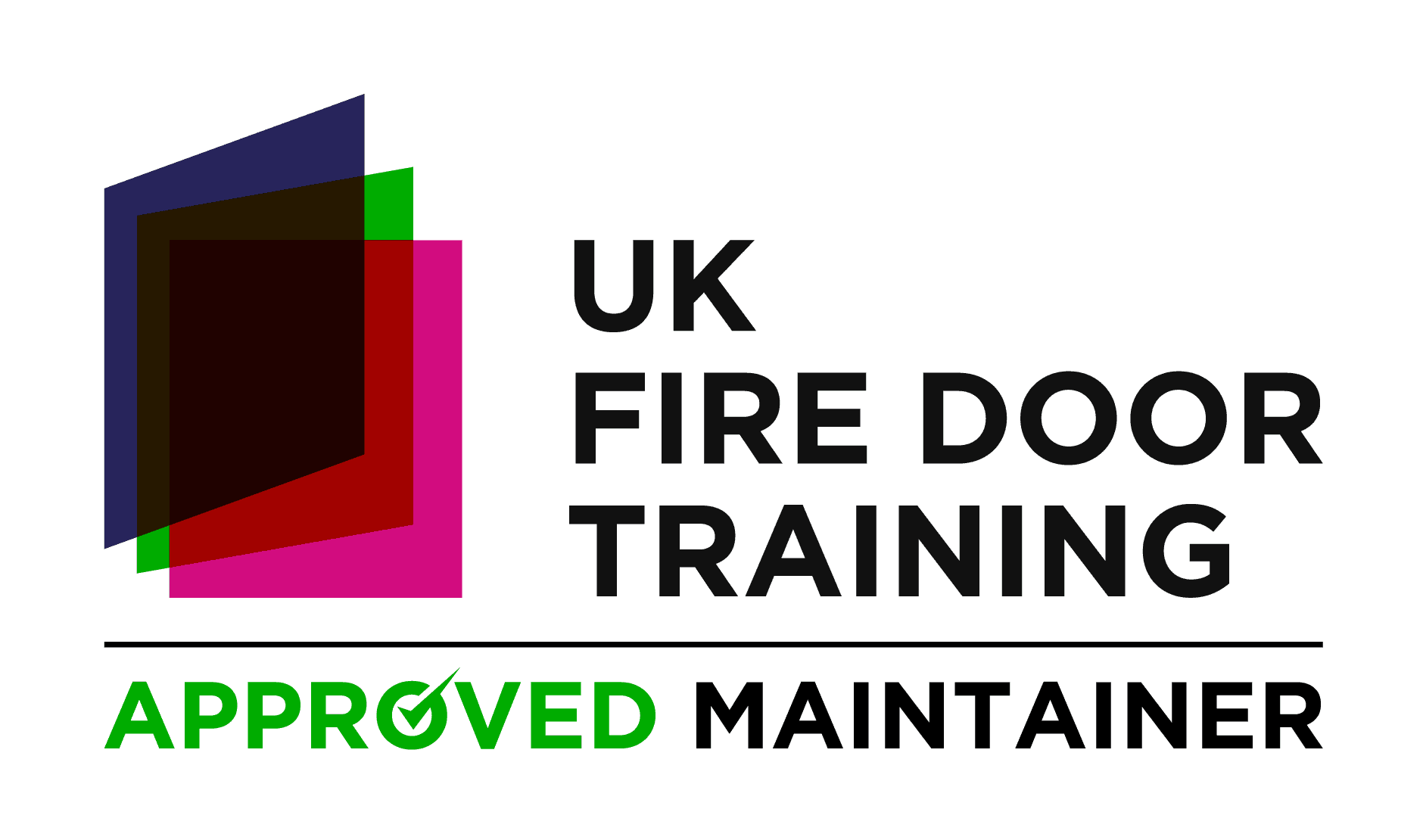
Maintaining accurate records is a vital part of ensuring fire doors and escape doors are properly maintained. These records not only demonstrate compliance with safety standards but also serve as an essential tool for future maintenance and inspections.
The Responsible Person is legally obliged to keep fire doors and escape doors efficiently maintained and in good working order.
Although not legally required, keeping detailed records of inspection and maintenance work is a strong indicator of commitment to fire safety.
Critical Records to Maintain:
- Fire Risk Assessment and Door Register:
- The building's fire risk assessment should identify critical fire doors.
- Mark floor plans with fire door and escape door locations.
- Maintain an up-to-date door register with periodic maintenance requirements.
- Inspection and Maintenance Forms:
- Keep detailed fire door inspection forms and maintenance & repair forms.
- Ensure a complete paper trail is available to demonstrate compliance with the door register requirements.
- Product Data Sheets and Installation Instructions:
- Retain copies of all product data sheets and manufacturers' installation instructions for the doors.
- Use these documents as references during inspections and repairs.
SCI Construction provide all product documentation to their clients upon completion of work. Clients should integrate these documents into their operation and maintenance files for the building, aiding in future maintenance.
Fire Door Ratings
Fire doors undergo rigorous testing under two primary standards: BS 476-22 and EN 1634-1. These tests serve a dual purpose: they not only certify the door's efficacy in containing fire but also denote its fire resistance rating.
The fire resistance rating is indicated numerically and specifies the duration, in minutes, for which a fire door can effectively resist fire. The common ratings are:
- FD30: Can hold back fire for 30 minutes.
- FD60: Capable of 60 minutes of fire resistance.
- FD90: Can hold back fire for 90 minutes..
- FD120: Provides 120 minutes, or 2 hours, of fire resistance.
In Europe the term FD is referred to as E, so you may come across doors rated as E30 or E60.
It is worth noting that while higher ratings like FD120 are specialist items and rare, manufactured upon specific requirements.
Identifying Combined Fire and Smoke Door
A combined fire and smoke door can be recognised by the suffix 's' following its fire rating. For instance, an FD30s door not only offers 30-minute fire resistance but also restricts smoke spread for the same duration.
It's important to understand that this specification is not usually indicated on fire door certification label. However, if you install compatible combined intumescent and smoke seals in the door frame or door leaf, the door automatically qualifies as an FD30s or FD60s, and so forth. The absence of 's' on the Certifire sticker does not negate its smoke-resisting capabilities, provided the door is equipped with the necessary seals.
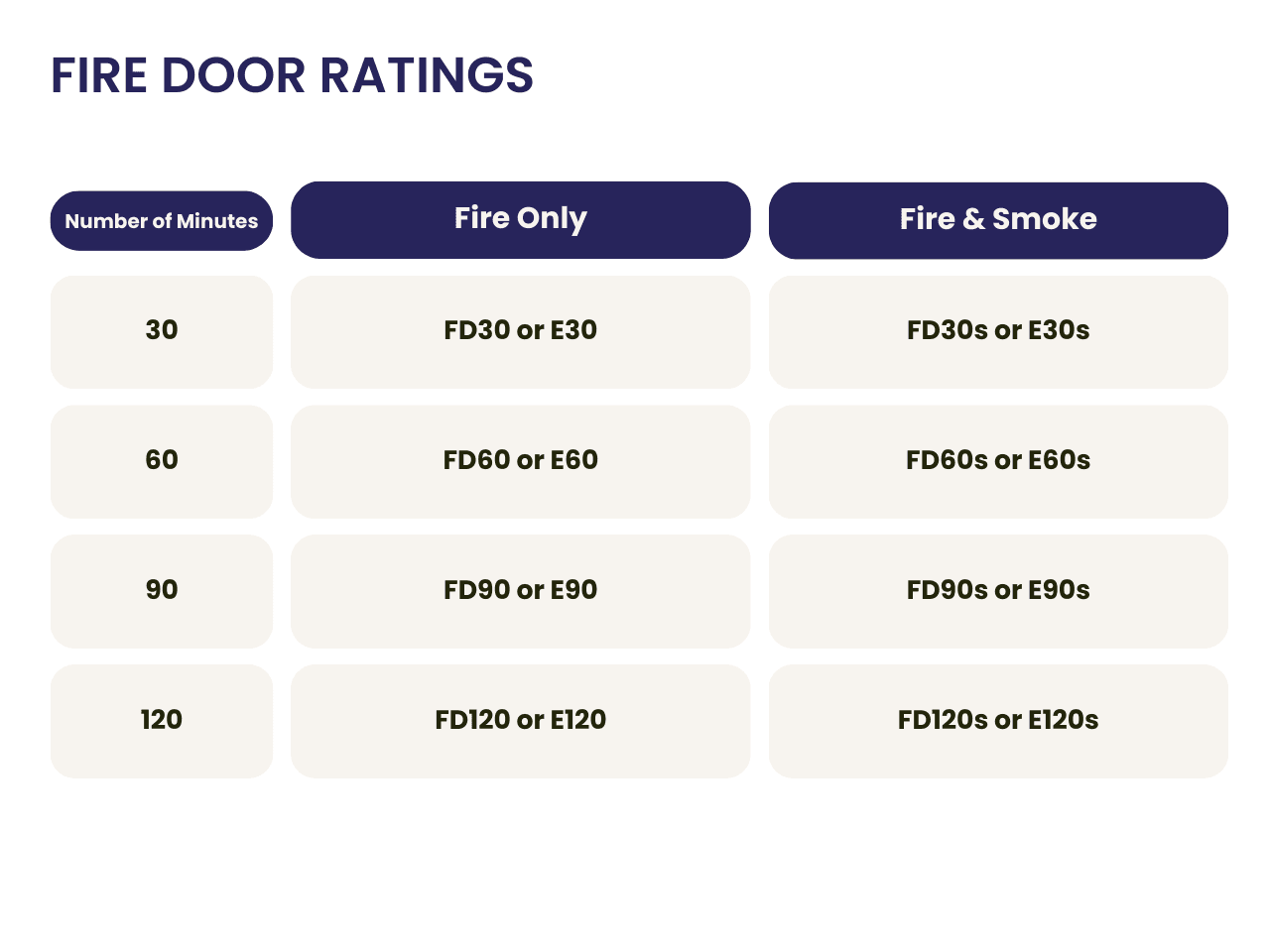
Nominal and Notional Fire Doors
The UK Government defines a notional fire door as one that meets the standards applicable at the time of its installation. They may not be up-to-date with current codes but may still offer adequate protection.
A nominal fire door is a timber-based door offering some level of fire resistance but is not as reliable as certified fire doors.
Certified fire doors have been thoroughly tested and offer the highest level of safety. They are generally considered the best choice for maximising fire safety in buildings.
Interested in our Fire Door services? We’re here to help!

We want to know your needs exactly so that we can provide the perfect solution. Let us know what you want and we’ll do our best to help.
